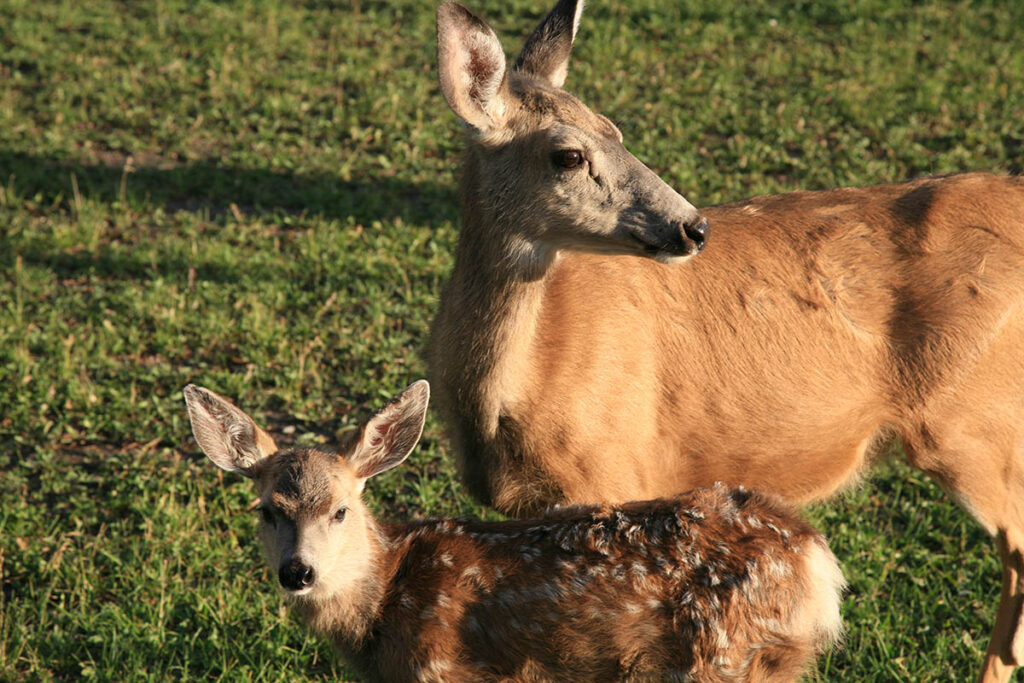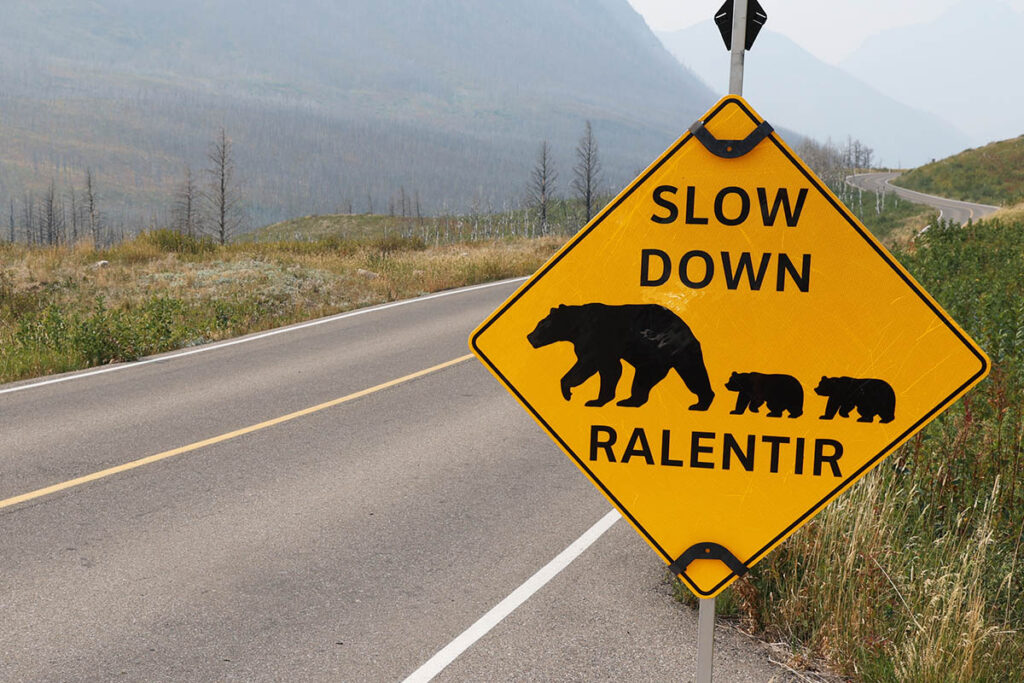Waterton Lakes National Park Wildlife Viewing
Waterton Lakes National Park wildlife viewing is a major attraction as wildlife is abundant in Waterton Lakes and can be viewed year-round, including in downtown Waterton village and along all park roadways.
For descriptions of all wildlife species present in Waterton Lakes National Park, visit our Waterton Lakes National Park Nature Guide.
Wildlife viewing in Waterton Lakes National Park requires patience and a little know-how, but the rewards are ample, as good as anywhere in the Canadian Rockies. Elk inhabit Waterton Lakes National Park year-round. A large herd gathers by Entrance Road in late fall, wintering on the lowlands. By early fall, many mule deer are wandering around town. Bighorn sheep are often seen on the north side of Blakiston Valley or on the slopes above the Waterton Lakes Visitor Centre; occasionally they end up in town. White-tailed deer are best viewed along Red Rock Canyon Parkway. Waterton Lakes National Park has a small population of moose, occasionally seen in low-lying wetlands. Mountain goats rarely leave the high peaks of the backcountry, but from Goat, Crypt, or Bertha Lake you might catch a glimpse of one high above you.

Look for mule deer in the townsite
The most common predators in Waterton Lakes National Park are the coyotes, which spend their summer days chasing ground squirrels around the prairie and parkland areas. For its size, Waterton has a healthy population of cougars, but these shy, solitary animals are rarely seen.
About 50 black bears live in Waterton Lakes National Park. They spend most of the summer in the heavily forested montane regions. During August and September, scan the slopes of Blakiston Valley, where the bears can often be seen feasting on saskatoon berries before going into winter hibernation. Much larger than black bears are grizzlies, which roam the entire backcountry of Waterton Lakes National Park and are often seen from roadways in spring and fall. Also see How Many Bears are in Waterton Lakes National Park?
Larger even still are bison. Although these prairie dwellers never lived in the mountains, they would have grazed around the eastern outskirts of what is now Waterton Lakes National Park. A small herd is contained in the Bison Paddock, just before the park gate.
Golden-mantled ground squirrels live on the Bear’s Hump and around Cameron Falls. Columbian ground squirrels are just about everywhere. Chipmunks scamper about on Bertha Lake Trail. The best time for viewing beavers is at dawn and dusk along the Belly River. Muskrats can be seen on the edges of Maskinonge Lake eating bulrushes. Mink also live at the lake but are seen only by those with patience.
Two major flyways pass Waterton Lakes National Park, and from September to November many thousands of waterfowl stop on Maskinonge and Lower Waterton Lakes. On a power-line pole beside the entrance to the park is an active osprey nest—ask staff to point it out for you. Waterton Heritage Centre has a great little free checklist for birders listing the 250 species recorded within park boundaries.

Watch out for wildlife signs throughout Waterton Lakes National Park.
Waterton Lakes Wildlife Photography Book
Even if you’re not interested in photography, Canadian Rockies Wildlife Photography, an eBook by renowned wildlife photographer Wayne Lynch, is a great resource for searching out local wildlife. It includes all the very best places to view wildlife in Waterton Lakes National Park.
Wildlife Safety in Waterton Lakes National Park
An abundance of wildlife is one of the biggest draws of Waterton Lakes National Park. To help preserve this precious resource, obey fishing and hunting regulations and use common sense.
An abundance of wildlife is one of the biggest draws of the Canadian Rockies. To help preserve this precious resource, obey fishing and hunting regulations and use common sense.
DO NOT FEED THE ANIMALS. Many animals may seem tame, but feeding them endangers yourself, the animal, and other visitors, as animals become aggressive when looking for handouts (even the smallest critters, such as squirrels).
STORE FOOD SAFELY. When camping, keep food in your vehicle or out of reach of animals. Just leaving it in a cooler isn’t good enough.
KEEP YOUR DISTANCE. Although it’s tempting to get close to wildlife for a better look or a photograph, it disturbs the animal and, in many cases, can be dangerous.
DRIVE CAREFULLY. The most common cause of premature death for larger mammals is being hit by vehicles, especially at night.
